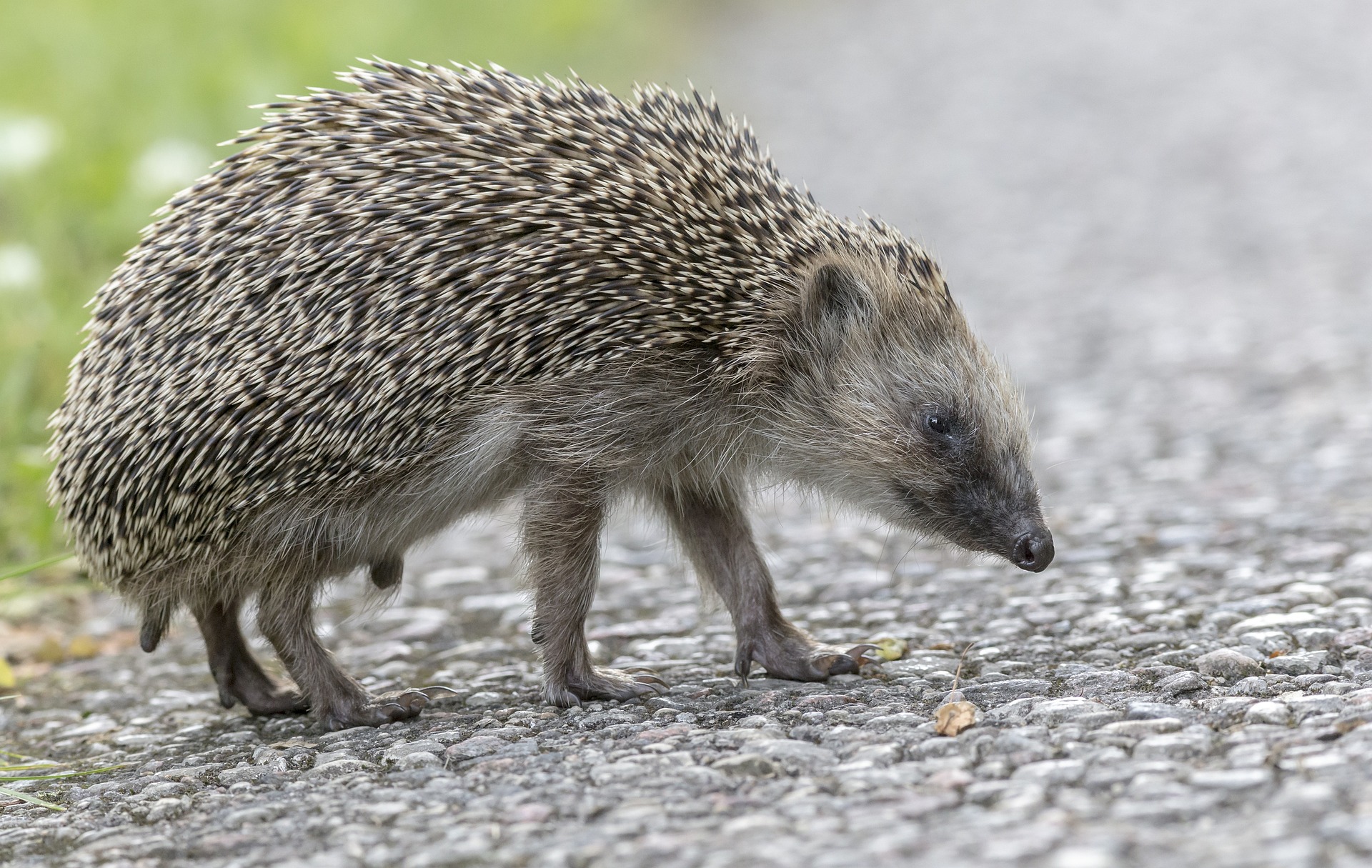T🦔 European Hedgehog (Erinaceus europaeus)
The European hedgehog is a small, nocturnal mammal best known for its spiny coat and its habit of rolling into a tight, protective ball when threatened. Loved by gardeners and wildlife enthusiasts alike, it plays a crucial role in controlling insect populations and maintaining ecological balance.
🔍 Identification
- Size: 20–30 cm (8–12 in) in length
- Weight: 400–1200 g (can vary with season)
- Lifespan: 3–7 years in the wild
- Appearance:
- Covered in 5,000–7,000 stiff brown and white spines on the back
- Soft, fur-covered underbelly
- Small black eyes, pointy snout, and rounded ears
🌍 Distribution & Habitat
- Found across Europe: from Iberia to western Russia and Scandinavia
- Habitats:
- Woodlands, meadows, hedgerows
- Gardens, parks, and farmlands
- Thrives in suburban and rural areas with plenty of undergrowth and shelter
🌙 Behavior & Lifestyle
- Nocturnal: Active at night; spends the day sleeping in nests of leaves or under hedges
- Solitary except during mating season
- Hibernates during winter (typically from October to March/April depending on the climate)
- Can travel 2 km or more per night in search of food
🍽️ Diet
- Insectivore/omnivore:
- Beetles, worms, slugs, snails, caterpillars, spiders
- Occasionally eats frogs, small rodents, bird eggs, fallen fruit
- Helpful in gardens by controlling pest populations
🐣 Breeding
- Mating season: April to September
- Gestation: ~35 days
- Litter size: 4–7 hoglets
- Young are born blind and spineless; spines appear within hours
- Weaned at around 4–6 weeks
⚠️ Threats & Conservation
- IUCN Status: Vulnerable in some regions due to population declines
- Major threats:
- Habitat fragmentation
- Road traffic
- Pesticide use (reducing insect prey)
- Garden hazards (e.g., strimmers, slug pellets, netting)
🏡 How You Can Help
- Create hedgehog highways (small holes in fences)
- Avoid pesticides and slug pellets
- Provide leaf piles or log piles for shelter
- Leave out fresh water and wet cat/dog food (no milk or bread!)
🌟 Fun Facts
- Despite their spines, they are not related to porcupines
- Can curl into a tight ball using powerful back muscles, making the spines an effective armor
- Their sense of smell and hearing is excellent, but their eyesight is poor
- Known to perform “self-anointing” — foaming at the mouth and smearing saliva on their spines (purpose still debated)
🧭 Summary
The European hedgehog (Erinaceus europaeus) is a beloved wild visitor to gardens and countryside alike. With its distinctive spines and endearing behavior, it’s both an ecological ally and a cultural icon. But with modern challenges putting pressure on their survival, hedgehogs need our help to thrive in the wild spaces we share.
Visited 945 times, 6 visit(s) today
Views: 1544
Subscribe to the newsletter:
